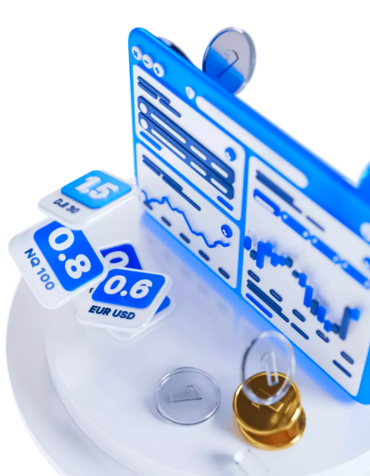We round up the best brokers that we believe offer best value for forex traders.





Trading the PENCAD forex pair involves buying or selling it in the foreign exchange (forex) market. Here are the basic steps to trade PENCAD:
To trade any forex pair, including PENCAD, you'll need to open an account with a reputable forex broker. Ensure that the broker offers access to this specific PENCAD pair.
Deposit funds into your forex trading account. The amount you deposit will determine the size of your trading positions.
Before making any trades, perform a thorough analysis of the PENCAD pair. This analysis typically involves fundamental analysis (economic data, interest rates, geopolitical events) and technical analysis (price charts, indicators) to determine your trading strategy.
Most brokers offer trading platforms that allow you to execute trades. Familiarize yourself with the platform's interface and tools.
Choose whether you want to buy (long) or sell (short) the PENCAD pair based on your analysis. Enter the trade order on your trading platform, specifying the amount (lot size) you wish to trade.
Executes the trade immediately at the current market price.
Sets a specific price at which you want your trade to be executed.
Sets a price at which your trade will be triggered if the market moves in a certain direction.
To manage risk, consider setting stop-loss orders to limit potential losses and take-profit orders to lock in profits at a certain price level.
Once your trade is executed, monitor the PENCAD pair's price movement. Keep an eye on news and events that may impact the exchange rate.
When you achieve your trading objectives, either manually close the trade or wait for your predetermined take-profit or stop-loss levels to be reached.
After closing your trade, assess the outcome. Review your trading strategy and learn from both successful and unsuccessful trades to improve your skills.
Always practice proper risk management. Never risk more than you can afford to lose, and consider using leverage cautiously if available.
First up is the Trend Following strategy. This one involves identifying trends in the market and following them. The idea is that if a currency pair is currently moving in a certain direction, it will continue to do so. To use this strategy, you'll need to analyze price charts or use technical indicators like moving averages or MACD to identify trending pairs. Once you've found one, enter a trade in the direction of the trend when there's confirmation that it will continue. And don't forget to set a stop-loss order just in case the trend reverses.
The Breakout strategy aims to take advantage of significant price movements that occur after a period of consolidation or range-bound trading. To apply this strategy, look for currency pairs that have been consolidating within a specific range for some time by using support and resistance levels or Bollinger Bands. Then place pending buy orders above resistance levels (or sell orders below support levels) anticipating a breakout. When prices break through these key levels with high volume or momentum, enter into trades accordingly. And of course, don't forget about risk management techniques like setting stop-loss orders and securing profits with trailing stops.
Lastly, we have the Carry Trade strategy which capitalizes on interest rate differentials between two currencies over time for profit accumulation. Basically, you're borrowing at lower interest rates and investing at higher interest rates between two currencies where there's a substantial difference in their rates (e.g., AUD/JPY). You go long on the currency with higher interest rate (in this example AUD) and short on the currency with lower interest rate (JPY). However, keep in mind that this strategy comes with risks from both currency fluctuations and changes in central bank policies affecting exchange rates.